- The Hyundai Santa Fe Hybrid and Toyota Highlander Hybrid both offer ample room for cargo and people in an attractive package.
- Both SUVs offer solid fuel efficiency, driver assist features and current technology.
- Here are the strengths and weaknesses of each, and which one's best for you.
2025 Toyota Highlander Hybrid vs. Hyundai Santa Fe Hybrid: Which Three-Row SUV Should You Buy?
Our verdict on which three-row SUV offers the best value
More attractive, easier to live with, and far more efficient than the three-row SUVs of old, the current crop of hybrid crossover SUVs has a lot to offer. The Hyundai Santa Fe Hybrid and Toyota Highlander Hybrid are two of the most popular SUVs for their respective brands. But how do you choose between these two front-running best-sellers? Let’s see how they stack up.
Hyundai Santa Fe vs. Toyota Highlander hybrids: MPG and engines
The Hyundai pairs a turbocharged 1.6-liter four-cylinder with a hybrid system for a total of 231 horsepower and 271 lb-ft of torque. The Toyota is equipped with a naturally aspirated four-cylinder engine and a hybrid electric motor for a total of 243 horsepower and 175 lb-ft of torque. Front-wheel drive is standard and all-wheel drive is optional for the Santa Fe Hybrid, but every Highlander Hybrid is all-wheel-drive because the electric motor powers the back axle.
If your idea of a great weekend is to hook up a trailer with snowmobiles or personal watercraft or even a small camper, the Highlander Hybrid is the better choice with 3,500 pounds of towing capacity. Hyundai's Santa Fe Hybrid can tow only 2,000 pounds.
Both of these hybrid SUVs are effective fuel sippers. The Santa Fe is good for 36 mpg combined when equipped with front-wheel drive; it suffers by only 2 mpg with all-wheel drive. Splitting the difference, the Highlander gets 35 mpg across the board. It's worth noting, though, that the Santa Fe Hybrid in our One-Year Road Test fleet has struggled to meet its mpg figure.
Room for cargo
Whether you’re schlepping kids and their giant band instruments or taking pets to the vet for a checkup, cargo space is key. On paper, the Highlander Hybrid earns the nod with 16 cubic feet behind the third row and 48.4 cubic feet behind the second row, while the Santa Fe Hybrid offers 14.6 cubic feet or 40.5 cubes with the third row folded down. It’s worth noting that the Hyundai hybrid’s rear opening is wider and lower to the ground, which matters when you’re shoehorning in that stationary bike you just bought on eBay.
The Santa Fe also deserves recognition for thoughtful small storage. A smart center console is deeper than it looks from the outside, and a spacious tunnel between the seats delivers two levels of shelving. We're fans of the double-hinged lid, which facilitates access from the first or second row.
Inside the Highlander, nicely integrated cubbies are handy for temporary storage and will hold snacks, sunglasses, keys and phones as long as you’re not swerving around tight corners. The door pockets make space for a large water bottle too. Both SUVs can be fitted with a roof rack or bike rack to offload luggage, transport, paddle boards and other toys.
Second- and third-row space
The Santa Fe Hybrid's boxy squared-off shape benefits taller passengers with up to 40.6 inches and 37.7 inches of headroom in the second and third row, respectively. That’s better than the Highlander Hybrid in the second row and more than an inch and a half roomier in the third row.
Legroom is also better in the Hyundai with 41.5 inches second row compared to Toyota’s 38.7 inches of legroom. Notoriously tight and suitable only for kids for anything longer than 15 minutes, the Highlander Hybrid's third-row seats offer just 28 inches of legroom in the third row, while Santa Fe Hybrid passengers get an additional 2 inches.
The Highlander Hybrid is wider across, though, offering 45.6 inches of hip room in the third row compared to the Santa Fe Hybrid's 42.7 inches. Second- and third-row shoulder room is slightly more generous in the Toyota as well. Overall, taller and longer-legged people will be happier in the Hyundai.
Technology
Toyota’s latest-generation tech is impressive, with a voice recognition system that answers quickly to "Hey Toyota" or even "Hey 'Yota" if you're feeling cheeky. The layout is intuitive, with bright, crisp graphics across the board. An 8-inch touchscreen is standard, but the 12.3-inch screen is preferred for clarity and appearance; it's worth the upgrade. Happily, Apple CarPlay and Android Auto are standard and work very well. That’s an important note since Toyota's native navigation and music streaming will require a subscription after a few years of ownership.
Hyundai, on the other hand, includes two 12.3-inch displays as standard. Apple CarPlay and Android Auto are also built in and operate effectively. The company has made great strides toward simplifying its menus, and it’s easy to switch between smartphone applications and native Hyundai operations. Get the top-spec Calligraphy trim for a head-up display and side-by-side wireless chargers to keep everyone happy up front.
Toyota includes a comprehensive suite of driver assist features, including adaptive cruise control, lane keeping system, forward collision mitigation, and blind-spot warning with rear cross-traffic warning. At the Platinum level, the Highlander Hybrid is equipped with a 360-degree camera, a head-up display, and cool adaptive headlights that swivel with the steering wheel to better illuminate curves in the road.
The Hyundai still bests the Toyota, however. It has a nearly identical offering at the base level, and higher trims add a blind-spot camera, a surround-view camera system, parking sensors, and a nifty automatic parking feature.
Verdict
The Highlander Hybrid starts at $47,815, while the Santa Fe Hybrid costs $41,095 at base (assuming you go like-for-like and add all-wheel drive to the Hyundai, but it's actually even less if you skip out on that $1,800 option).
Even if you fully load both, the Hyundai still undercuts the Toyota. A top-spec Santa Fe Calligraphy hybrid (again with the AWD added in) costs $51,145, while a fully loaded Highlander Platinum hybrid will run you $55,470.
For the money, the Hyundai Santa Fe Hybrid is a better value for those who need more legroom and headroom, and you can get a generous suite of features at the top trim for less. It's also newer and offers an outstanding 10-year/100,000-mile warranty. Consider, however, that the Toyota Highlander Hybrid has a 1,500-pound towing advantage and more overall cargo space.
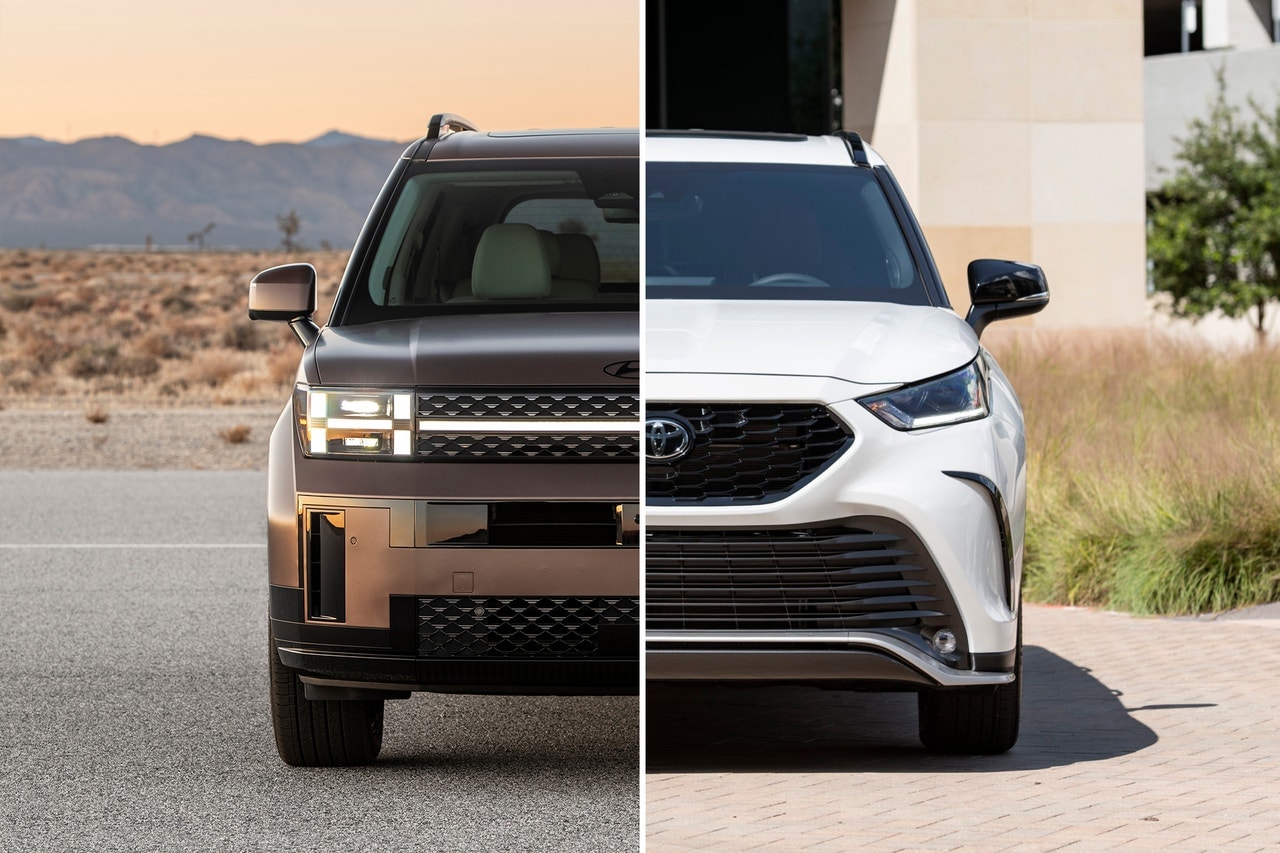


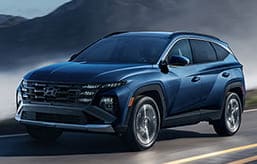
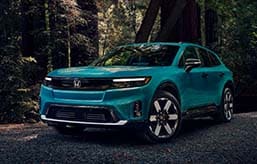
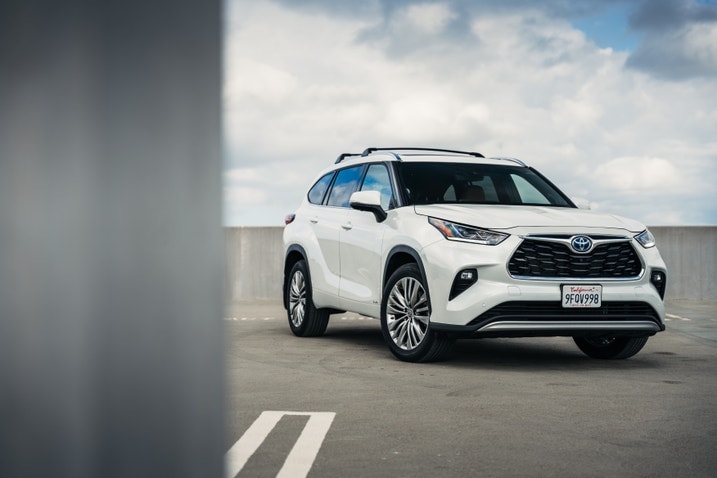
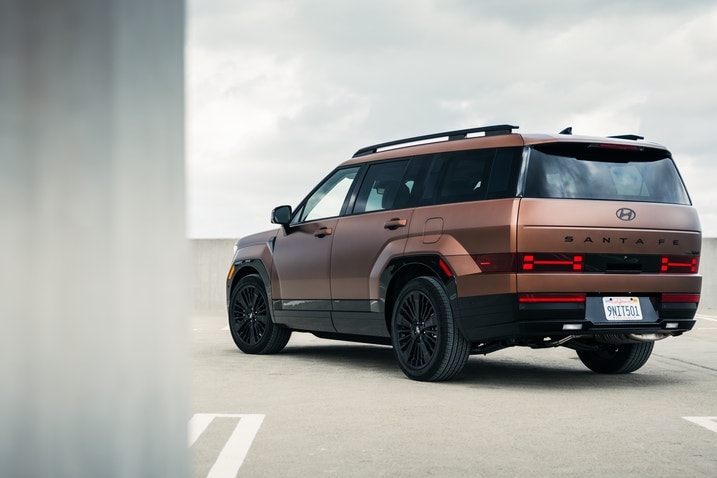
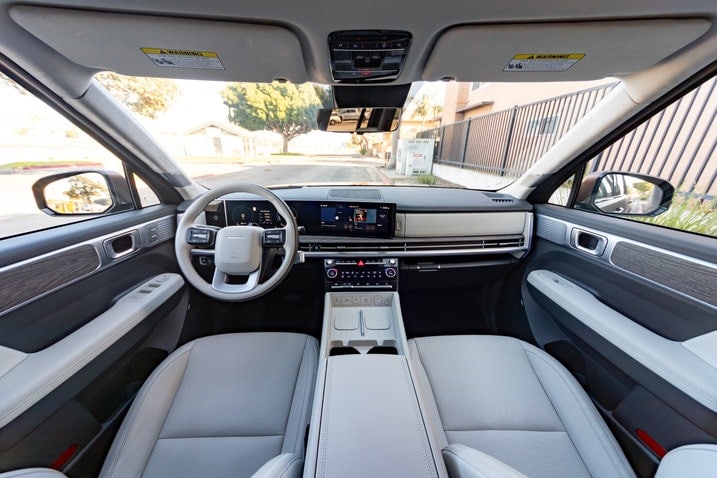
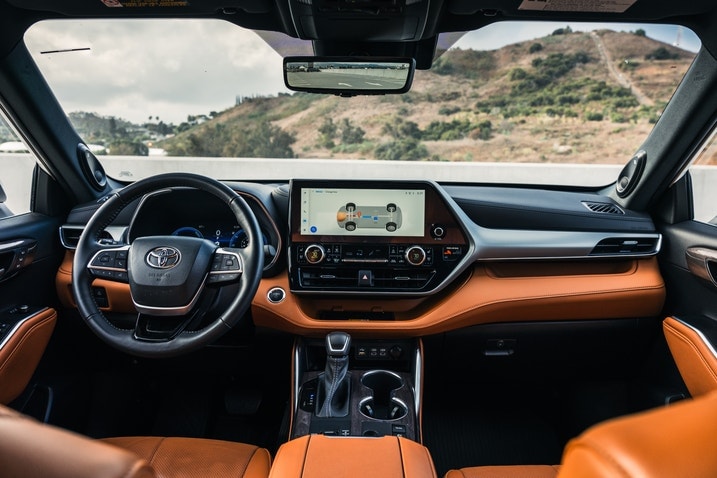
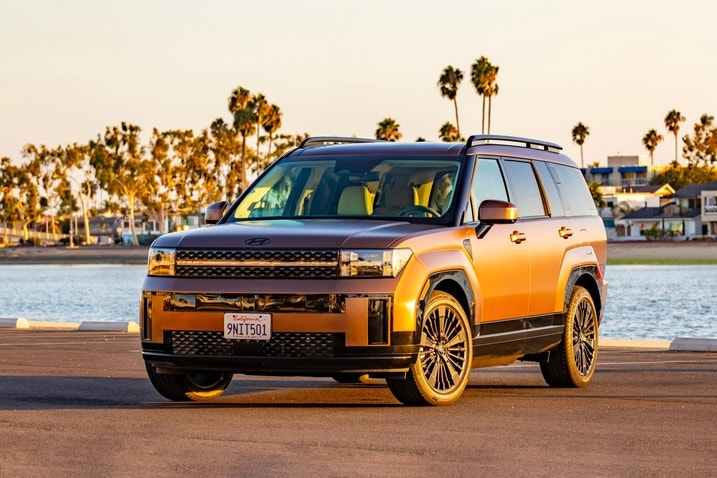
 by
by  edited by
edited by